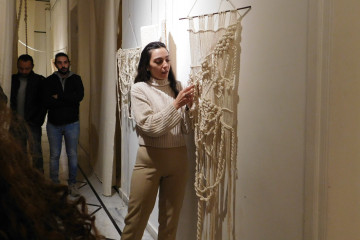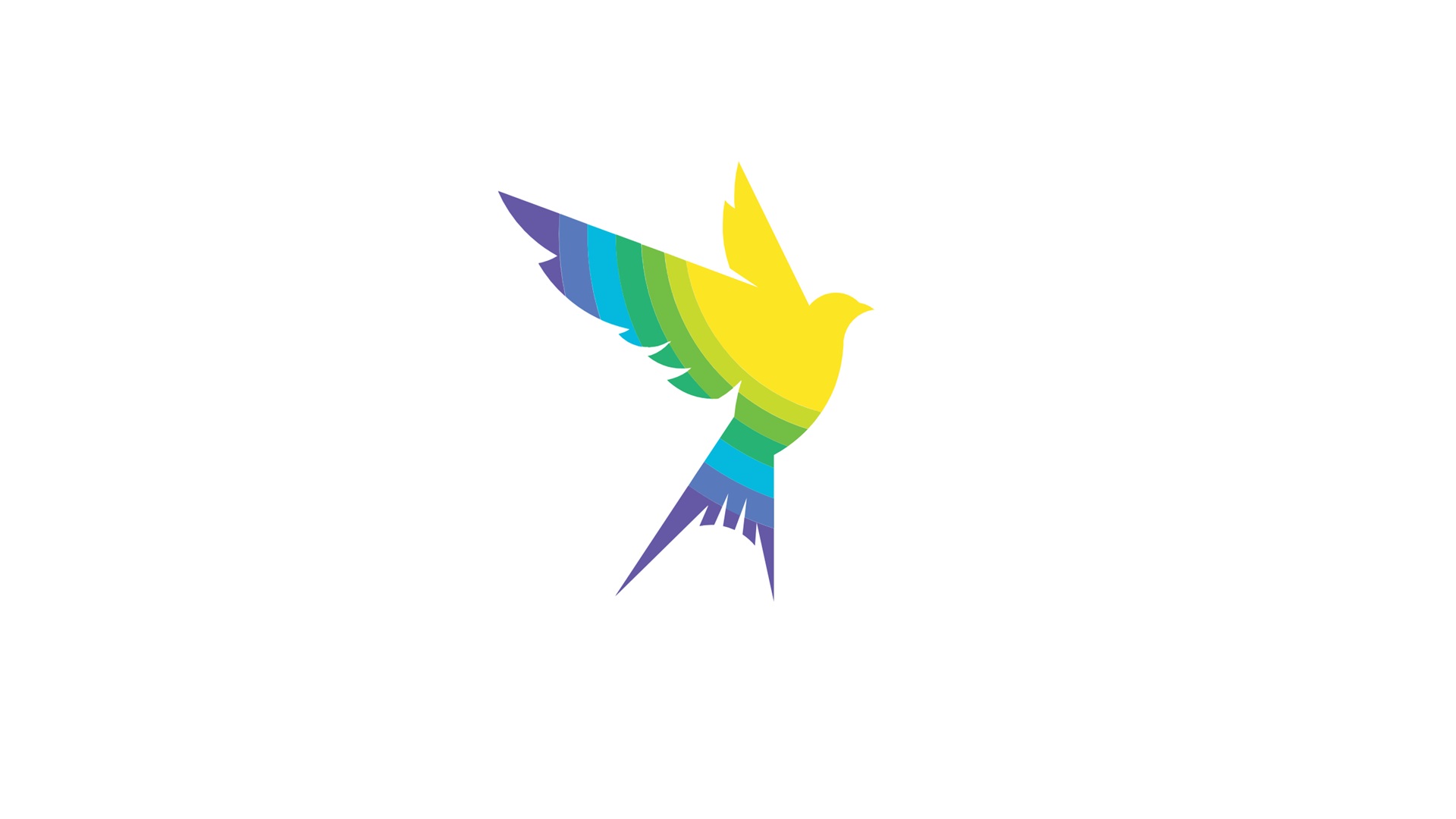

With the war-torn country undergoing a decade of crisis and a mass exodus of millions, much of the domestic Syrian art scene was shattered and sidelined throughout the long, dark years, yet with a new generation driven by hope, it is slowly reviving.
From Aleppo to Damascus, installation art has captivated Syrians and drawn a fresh audience to innovative ideas by youth who have struggled growing up in Syria.
Amid the tremendous devastation in Aleppo’s ‘al-Hatab’ square – a stones-throw away from the historic walls of the Ancient City v white and coloured doves surrounded the rubble as a remarkable open-air art exhibition took over the city.
"Art is something noble, and you have to use materials which are also noble and positive for the environment, it’s your job as a creative to inspire and to spread a message"
Adequately named Once Upon a Time it featured 29 striking installations of white polyester doves, some depicting birds hanging upside-down, others trapped in droves by tombstones and doves flying alongside empty plates to signal starvation.
The artists speak to the concept of a frustrated new generation and their crushed dreams, its creator, Buthaina Ali [48] told The New Arab that her core vision behind the work was spurred by a multitude of ideas.
“The works tell a story of each one of the artists, tales weaved by their creative imagination throughout the years of their formation, years of war, memories, dreams, events, loss and pain and hope.”
Jullanar al-Srikhy’s [22] impressive Paralysis installation captures the sentiment where seven birds are suspended from their legs. One of them has a pale white light that casts the shadow of the dove on the ground in a circular spot.
Speaking about how the idea first came to her, she said, “When I first looked for what to do, I hung [the dove] by its legs. My fear compelled me to see the bird, and I gave in to sit and watch my helplessness silently.
“I wanted to see my fear. It’s beauty, despite its ugliness, as it exists. It is our inverted reality. Our inability came from fear, from pain and fatigue. To feel fear means to wake up to see yourself, you are not blind, you can see, you are not dead, you are just handcuffed, you are the dove, you are the prey.”
Joumana Mortada’s [24] installation I’m Here shows a space in which coloured Plexi panels are distributed by diverse lighting fixtures, and the doves are distributed as white accents are added to the palette.
“When I first imagined the dove at first, I could not put it within any philosophical dimension, I saw it as part of my colour palette. My colours are transparent, reflecting my reality. I will post it in all corners and my white bird is a touch of light in my sky.”
The exhibit is an extension of a successful show in Damascus made in Ramadan 2021, the northern – often ignored – city of Aleppo has a powerful story to tell.
Joumana continued: ”It is really important [Aleppo] to civilisation, history and people genuinely need a lift, the situation is bad and many are struggling, they need art, art can heal people from within.”
|
Artist Pierre Hamati’s [25] elaborate Secret Supper piece depicted doves hanging with metal dinner plates above a large wooden table suspended by rope as hunger took centre stage as the underlying theme.
“I used to have an obsession with loss, it [the installation] represents to me nothing but the thief who robs us of the things that we have always felt lost for ten Years [through the war]," he tells The New Arab.
“I asked myself and those around me; What did we lose in the war years? Love, faith, strength? What about the secrets of life? Water, electricity, food?”
Threads tell a splendid story of motherhood
Meanwhile, in Damascus, another installation exhibition completely unique in Syria attempted to boldly break boundaries in a different way.
Artist Tulin Dima Qabanni [35] created an exquisite fibre art exhibition titled Mother - Homeland - Mother Nature essentially using cotton and other environmentally-friendly materials to tell using threads and cotton the story of motherhood, nature and Syrian cotton in her first – much anticipated – solo exhibition in the Zawaya art gallery.
Tulin told The New Arab that this level of advanced fibre art is certainly here to stay in Syria for the long term: “Fibre Art is nature, its nature speaking to us, nature is my central point, I see fibre art as taking over everything.”
“Art is something noble, and you have to use materials which are also noble and positive for the environment, it’s your job as a creative to inspire and to spread a message.”
The installation has several frames made of threads, cotton portraits and several trees, lights and larger threads to depict life and motherhood, using the DNA symbol.
She added: “You know, I hate labels, people ask me how you describe yourself, in art I don’t create to sell, I create for myself, it’s a tool for me. One of the first comments I heard in the exhibiting was about is that it’s so intimate, like the female but the message is very deep [referring to the exhibition], it is a trauma."
Speaking on the core reasons behind the exhibition revealed a sense of disturbance with the artist as she told The New Arab how some of her ideas in this show came to pass.
“There are lots of things that have scarred me here, to survive in Syria, I needed to decide to silence parts of my feeling, like the poverty we see in the streets. While I have been emotionless here for some time, almost immune to new concepts.
"I once walked in the street in al-Shalaan, Damascus and I heard a comment intended as a joke from a nearby balcony, 'you won’t hear the bullet which will kill you' it was so troubling for me to be threatened randomly, its a fundamental problem," she adds.
“It’s essential to explore new ideas and boundaries, but it’s not about making others do it, it’s about doing it yourself and proving it can be done. I chose the name mother for the exhibition because of nature and intimacy, DNA is important as is belonging, belonging can be DNA, Religion, Culture, Gender, all of these things.”
The exhibition shows a resurgence in Syrian art, an industry which has come a long way in the many tough years of difficulty during the war.
Mostafa Idris, the founder of Make it Art, a Syria-based agency following all things Syrian art, viewed it as an important marker going forward.
“[The exhibit is] A new and important idea to link Syrian cotton known as Syria’s white gold, which is part of our identity with art. Attempts by young artists to search for and revive [these concepts] through unique methods have increased in the past few years. Those such as the Tulin Qabbani’s exhibition and others herald a bright future ahead in the Syrian art scene.”
Tulin’s last words were poignant, “If there is one message that I would like to get across from the exhibition it’s that we are breaking through and want to be bold.”
Danny Makki is an analyst covering the internal dynamics of the conflict in Syria, he specialises in Syria’s relations with Russia and Iran.
Follow him on Twitter: @danny_makki








 Follow the Middle East's top stories in English at The New Arab on Google News
Follow the Middle East's top stories in English at The New Arab on Google News


